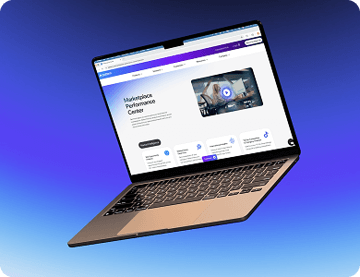The Secret to Ecommerce Branding to Stand Out From Competition
You have a brand strategy for product packaging, store experience, and advertising creative, but what about ecommerce marketplaces? Let Pattern help.
Headed into 2021, the ecommerce playing field is more level than ever. Small and medium businesses are now responsible for more than half of Amazon sales, marking a 30% increase in the last decade, and Amazon recently announced a $30 billion investment in small sellers. Any company with a quality product—whether that company has 5 employees or 5,000—can now find success in online marketplaces as long as they pay attention to one crucial ingredient: branding.
By forming a clear, consistent brand identity and capitalizing on all branding opportunities, both small and large businesses can stand a step above competitors and ultimately increase conversion.
The basics of branding for ecommerce
A company’s brand is how consumers perceive the company or product. Shaping this perception positively is the goal of ecommerce branding. Your logo, typography, imagery, colors, packaging, social media presence, messaging, and customer service all influence your company’s identity. It’s this identity that earns your brand loyal, lifelong customers—or, if done wrong, turns customers away.
Every time a potential customer interacts with your brand, whether by seeing your product online or on a shelf at the store, you’re making an impression. What kind of impression do you want to make when someone sees your product? What important company values do you want to communicate? What vibe do you want shoppers to feel when they visit your website or use your product? These are all questions your branding strategy should answer.
Consistent branding makes a difference
Solidifying your identity across platforms, elements, and products helps consumers understand your brand no matter where they find it. This builds better brand recognition and more trust in your offering.
Across Platforms
Consistency is the key to successful branding. It matters less what your branding looks like and more that you have a clear, unique brand identity that’s consistent across all platforms, marketplaces, and social media channels. Don’t make the mistake of creating one brand identity in retail stores, a different one on social media, another in online marketplaces, and yet another on your company website.
When consumers can’t grasp your brand identity clearly and recognize it instantly, they’re less likely to trust your brand, buy your products, and stick with your organization over time. Even well-established companies with a clear style and brand struggle to consistently communicate their identity on ecommerce. These brands may have talented creative teams that design compelling content for displays in brick-and-mortar stores or their own company websites.
But translating these strategies to Amazon and other online marketplaces requires time and resources that many brands lack, making it more difficult than it needs to convert on ecommerce.
Across Elements
Just like your overall creative strategy should be consistent from platform to platform, your creative elements should also be consistent with each other. Your brand identity, logo, packaging, and design should all complement each other. For example, if your product itself is sleek and modern, your logo and font choice should reflect that style. If your focus is environmental sustainability, you probably don’t want to package your product in copious amounts of plastic. If your brand vibe is upbeat and fun, it would make sense to use vibrant colors in your advertising and social media posts.
Across Products
And finally, you should have continuity and consistency between your distinct products. Even if you sell a wide range of goods, they should all be connected in your product family in a way that makes sense to consumers. Let your branding show your pride for each of your related products and your company.
Once you’ve nailed down your consistent brand, maximize every possible opportunity to communicate it with customers on ecommerce. Fill every image slot on your product listing page and optimize below-the-fold and additional content. Use as much real estate as the platform offers you. Product pages should be filled from top to bottom with consistent brand content. Make sure your logo is present, whether on your product itself or the product packaging, so consumers always know the product is coming from you.
Because of Pattern’s love for data, we see the difference it makes when our partners start to communicate a clear, consistent brand identity on ecommerce. We’ve seen significant increases in conversion for both well-established companies and ecommerce newcomers when they start implementing effective branding online. Why? Because when it’s clear you know who you are, customers believe in your brand and feel more safe and secure investing in your products.
Use creative content to innovate and strengthen your brand
Take a second to imagine your shopping experience as a consumer at a retail store. How do you decide which product to buy when you’re presented with several options? You likely first gravitate toward a product based on its packaging and presentation. You might then pick it up to feel its weight, read about its ingredients on the label, and compare its features to similar options on the shelf.
All of these factors are important in helping you—and all consumers—understand the brand and make a final purchasing decision. The goal of creative content on ecommerce is to use visual elements to recreate this brick-and-mortar experience online. Your product listings, images, videos, and descriptions should visually communicate the shopping experience to consumers and tell them as much about your product as they’d know if they could personally hold and examine it.
Your brand may be able to recreate the shopping experience and answer consumers’ questions simply by optimizing the basics of your product listing, like the image stack and product description. But if you want to go above and beyond to increase your conversion and strengthen your brand identity, there are several additional tactics you can try:
- Video. Video is a highly underutilized area of ecommerce. Video is as close as consumers can get to seeing and handling a product without actually shopping in-person, which is a relevant consideration in the post-COVID world. One short clip of video can make your product come alive and communicate more than all 7 photos in your image stack. And if competitors aren’t doing video, your product becomes the only listing consumers interact with before making a decision, making you more trustworthy and more likely to win the buyer.
- Amazon Live events. Amazon Live is an interactive streaming feed for brands to showcase their products to customers. This is a great opportunity for brands to connect with their customers, tell their brand story, and highlight their products. At Pattern, we’ve seen great success for Amazon Live events. After an Amazon Live event for the baby monitor brand Owlet, Pattern observed a 9-16% increase in sales.
- Seasonal promotions. Just like retail stores revamp their window displays for each season, it’s not a bad idea for online sellers to make seasonal promotions for ecommerce. If you sell health supplements, for example, you may rework your creative content for the back-to-school season to focus on supplements that improve immune system function.
- A+ Content. Amazon’s A+ Content, which was previously known as Enhanced Brand Content, is a tool that allows you to fill your product listings with visually-rich content like images, custom text placement, and diagrams. Using A+ Content is one of the most straightforward ways to show off your brand identity in every product listing. According to Amazon, adding this free feature to your listings can increase sales by an average of 3% to 10%.
When you’re working to take your creative strategy to the next level, remember to keep it fresh and frequently update your ad campaigns, promos, and visual communication (while, of course, staying consistent with your brand like we’ve discussed previously.) Need help establishing your brand on ecommerce? That’s our specialty. We’re eager to work with you to create your brand identity or translate your established brand to ecommerce, all at no cost to you. Email hello@pattern.com for a free consultation or request a demo today.


.jpg)





.jpg)

